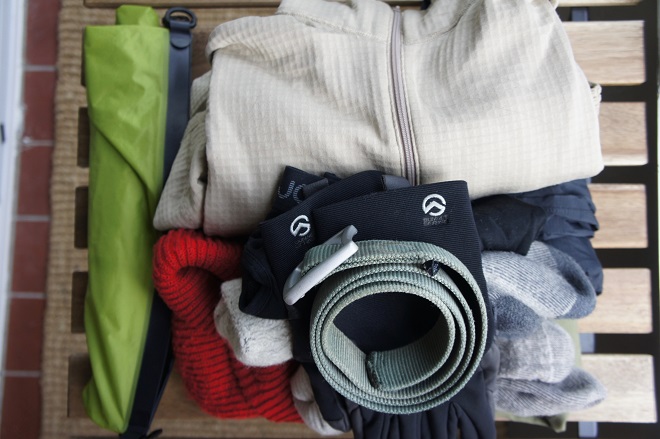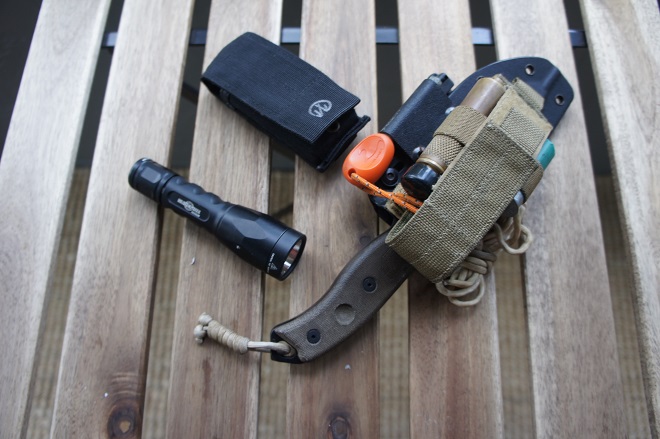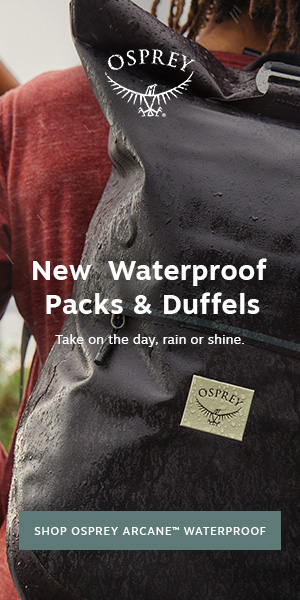A Beginner’s Guide to Preparing a Bug Out Bag
Whether you worry about an earthquake, tsunami, extended power outage, or civil unrest, there are plenty of reasons to have a bug out bag ready to get you through the uncertainty of the next 72 hours. For me, there are two huge geologic threats in the PNW that could disrupt my routine at any given moment: Mt Rainier and the New Meridian Fault. Three if we begin to think about the massive infrastructure failures that could develop in the aftermath of either. Long story short, it’s worthwhile to think about what you’re going to do in the event that you need to take care of yourself.
“Whether you worry about an earthquake, tsunami, extended power outage, or civil unrest, there are plenty of reasons to have a go bag ready to get you through the uncertainty of the next 72 hours.”
Each to their Own…
This is a totally personal go bag that I’ve curated to complement my skill set, comfort levels, and preferences. There’s more info out there on bug out bags than pretty much any other vein of carry and/or preparedness. So do your homework! Figure out what challenges you’re likely to face in your geographic area, in your climate, and in relation to your abilities.
Make a Plan
First and most importantly, you need to have a plan. Where do you work? Is your go bag with you at the office? Do you have to account for loved ones? Perhaps you should consider meeting up with friends if the need to bug out arises; there are, after all, benefits to working as a team. Do you have a rally point? Plan A, B, and C? Do you have a means to communicate? All this is to say, “Do you have a protocol established?” If you don’t, I think that’s more important than anything else so I’d have a real conversation with yourself and those you love. Draft a plan in the event of a disaster. Print that out with locations, check lists, contact info, etc. and tape it to the inside of your gear closet.
“First and most importantly, you need to have a plan. Where do you work? Is your go bag with you at the office? Do you have to account for loved ones?”
Cool. Now we’re onto the fun stuff.
Clothing
Clothing really depends on your climate, but a couple extra pairs of socks and underwear and an extra change of clothes will do you well. Stay away from cotton if you can, it holds on to water like a sponge. Synthetics like polyester, elastane, and acrylic are generally better; wool is also very good at maintaining heat even when wet—it’s also antimicrobial so you won’t stink so bad after day three. A hat and gloves are a good idea even if you live in warmer climates; adverse sleeping conditions will certainly merit covering your extremities.
“Clothing really depends on your climate, but a couple extra pairs of socks and underwear and an extra change of clothes will do you well.”
Water
Water is the most crucial aspect to a bug out scenario. Not only should you have water to get you through any immediate hazard/challenge, but you should also have a way to treat water in the future should you run out. I’m only packing three liters from the get-go, but I’m also taking 224oz of storage space that I plan on filling as needed. I have at least five ways to treat water in my kit, six if I have the wherewithal and time to throw in some bleach before running out of the house. This works for me because I live in the PNW and there’s water everywhere. If I lived in the desert I would have to reconsider my approach here.
“Water is the most crucial aspect to a bug out scenario. Not only should you have water to get you through any immediate hazard/challenge, but you should also have a way to treat water in the future should you run out.”
Food
As a frequent backpacker, I’m fortunate to have some freeze dried food on hand. I’ve stashed three days of calories and some other basics to keep me moving. I need to throw some bars in here for the “I need food now” tummy rumbles. Realistically, you can ration calories out depending on the severity of the disaster, but three days is typically enough to get you in the mental space to prepare for what’s next. Since I’m choosing to pack freeze dried food, I’m also packing a stove and isobutene fuel to boil water (this is one of my five ways to treat water) to “cook” the food. I say “cook” because you can add cold water and just let it rehydrate for twice as long—will it suck? Maybe. Will it keep you fed? You bet.
“As a frequent backpacker, I’m fortunate to have some freeze dried food on hand. I’ve stashed three days of calories and some other basics to keep me moving.”
Shelter
So much of this list is dependent on your local environment. If you live in Chicago, you’re going to need a different setup than someone who lives in Melbourne. You may need something to sleep in or protect you from the elements, especially if you’re going to be relatively stagnant (perhaps waiting for help) during a disaster response. A tarp and some cordage can provide you cover from the elements and an insulated sleeping pad will keep the ground from sucking the body heat right out of you. With any luck and decent weather, a light blanket and a puffy jacket will get you through the night. Though I’ve never had any luck or decent weather, so I pack accordingly.
“You may need something to sleep in or protect you from the elements, especially if you’re going to be relatively stagnant (perhaps waiting for help) during a disaster response.”
There is no greater value in outdoor gear than the Therm-a-Rest Z Lite Sol. It’s waterproof (closed cell foam), it’s got a reflective coating that gives it an R value of 2.6, and a short can be had for 35 bucks.
I also packed a gigantic Therm-a-Rest NeoAir Xtherm because I believe that there’s an inherent value and performance factor to a good night’s sleep. It’s got an R value of 5.7 which is ridiculous. I also highly recommend a Sea-to-Summit Comfort Plus Insulated with an R value of 5. For warmth I’ve chosen a versatile 40-degree synthetic blanket; I can double it over as a sleeping bag or leave it loose if it’s warmer. I like synthetics for a go bag because they’re cheaper and perform better in wet conditions than their goose/duck down counterparts.
“A tarp and some cordage can provide you cover from the elements and an insulated sleeping pad will keep the ground from sucking the body heat right out of you.”
First Aid
This is huge. Lots of people will have food and water but be unable to treat even basic musculoskeletal injuries or illnesses which can really hurt you over the course of days. Take a class. Build a kit. Check out our previous work on first aid kits here.
“Lots of people will have food and water but be unable to treat even basic musculoskeletal injuries or illnesses which can really hurt you over the course of days.”
Hygiene
This will differ for everyone, but I’m packing:
Contacts + saline + glasses
Tooth brush + tooth paste
Soap + toilet paper
Personal medications
Moist towelettes
Pack towel
Hand sanitizer
Tools
General things MacGyver would want if he were escaping kidnappers include:
Multi-tool—Leatherman OHT, I dig the newer Signal as well.
Cordage—I prefer the high viz stuff so I can see and be seen. I’ll change my tune if I make it to season two of The Walking Dead.
Ways to make fire—Carry a Bic lighter or three, a ferro rod if you know how to use one, matches obviously, and a simple candle makes an awesome fire starter and heat source. I make my own fire starters out of jute and wax, more on those here.
Duct tape—No explanation needed.
“Carry a Bic lighter or three, a ferro rod if you know how to use one, matches obviously, and a simple candle makes an awesome fire starter and heat source.”
Camp Knife—My requirements for a good camp knife: fixed blades only, blade length 5-6 inches, blade width 3/16-1/4 inch, and high carbon steel. I’ve been carrying an ESEE 5 for four years now and it’s the last knife I’ll ever need to buy (really, it has a lifetime warranty on it). I’ve also had good success with SOG and Ka-Bar knives for general camp use.
Headlamp—Nothing fancy here, just a hundred or so lumens for chores after dark. Bonus points if all your electronics run on the same batteries.
Flashlight—I’m packing a SureFire P2x Fury as a self-defense and signaling item.
Extra batteries—It’s a good idea to take at least one extra set of batteries for each item. I’d carry two and not think twice about the weight penalty.
The Pack: I am the proud owner of a Granite Gear Leopard 58. It is nearly a perfect bag for all outdoor applications outside of big game hunting. It’s light, it’s tough, and my goodness is it versatile. The beaver tail and compression system allow you to carry all manner of goods on the outside of the bag. The lid is free-floating so you can carry additional items between it and the main body. The suspension is beefy enough to handle 50 pounds and the hip belt is removable for lighter loads. It’s got stretch woven pockets on the sides large enough for two 1L Nalgene bottles and another stretch woven pocket on the front face which works great for smaller quick-access items. Sadly, so sadly, GG stopped making the Leopard series. But rest assured, others will rise. I am very excited to see the Mystery Ranch Stein 62, which should handle the go bag task with ease. The Hill People Gear Ute is also highly capable, though slightly higher in price.
“I am the proud owner of a Granite Gear Leopard 58. It is nearly a perfect bag for all outdoor applications outside of big game hunting. It’s light, it’s tough, and my goodness is it versatile.”
Self Defense: If you can pack a handgun, that’s great. That’s for you to defend yourself and those you love from people who want to harm you for their benefit. If you can pack a rifle, that’s great. You can use that to defend yourself and hunt caliber-appropriate game should you run out of rations. We won’t get into it any further, but I’ll be packing both.
Extra Supplies and Additional Support Items:
The plan is to get out by vehicle to a lower population area where the resources will be higher per capita and wait for emergency services. If I’m at work, I need to get home to my go bag and additional supplies. I’m going to gather as much information as I can on my way home to determine which of my three potential evacuation routes is most viable, throw my stuff in the car, and go. If evacuation seems impossible due to massive infrastructure failure, I will attempt to get additional supplies like fuel and food and prepare to “bug in.”
“The plan is to get out by vehicle to a lower population area where the resources will be higher per capita and wait for emergency services.”
In the event I think I can get out by car, I’ve packed up my TNF Basecamp Duffel with a bomber 4-season tent, a 15 degree down bag, extra food and fuel, additional clothing, another camp knife, extra batteries, cordage, a road atlas, and some other miscellaneous comforts. This will be way too heavy to carry along with my pack for any realistic distance, so this is solely for the event I will be able to drive to a safer location.
“If evacuation seems impossible due to massive infrastructure failure, I will attempt to get additional supplies like fuel and food and prepare to “bug in.””
This isn’t meant to be all inclusive, but rather a good foundation for you to build a bug out kit that works for you. Here’s a list of the 10 essentials and some other items I have included and others still that I am missing, but would like to have.
10 essentials:
- Map
- Compass (optionally supplemented with a GPS receiver)
- Sunglasses and sunscreen
- Extra clothing
- Headlamp (or flashlight)
- First-aid supplies
- Fire starter
- Matches
- Knife
- Extra food
Clothing
Socks x2 (wool)
Underwear x2
Pants
Insulation Layer (wool or synthetics)
Hat and gloves
Water
Containers: 1L Nalgenes x3, 64 oz Sawyer flexible bottles x2, 100 oz CamelBak bladder x1
3L of water carried + 5 ways to treat water in the future
Boil/pump/squeeze/tabs/iodine/(bleach)
Food
3 days of food
Stove/fuel
Portable pot/pan
Shelter
Tarp (or lightweight backpacking tent)
Insulated sleeping mat
40-degree synthetic blanket/sleeping bag (you may need something warmer).
First Aid
Hygiene
Tools
Self defense
Road atlas
Maps of potential evacuation locations
Compass
Money (cash), ID, important documents like driver’s license/birth cert/social/passport
Tenacious Tape (field repair of clothing and equipment)
More cordage (you can do nearly anything with enough cordage)
Writing utensils/small notebook
Knife sharpener
Batteries
Purell hand sanitizer
Monocular/Binocular
Fishing hooks + line
Whistle
Bug spray + sunscreen
Zip ties
Aluminum foil
Garbage bags
Fishing kit
Two-way radios
So, that’s me and my basics all done and dusted, what do you pack into your bug out?





 Carry Awards
Carry Awards Insights
Insights Liking
Liking Projects
Projects Interviews
Interviews



























